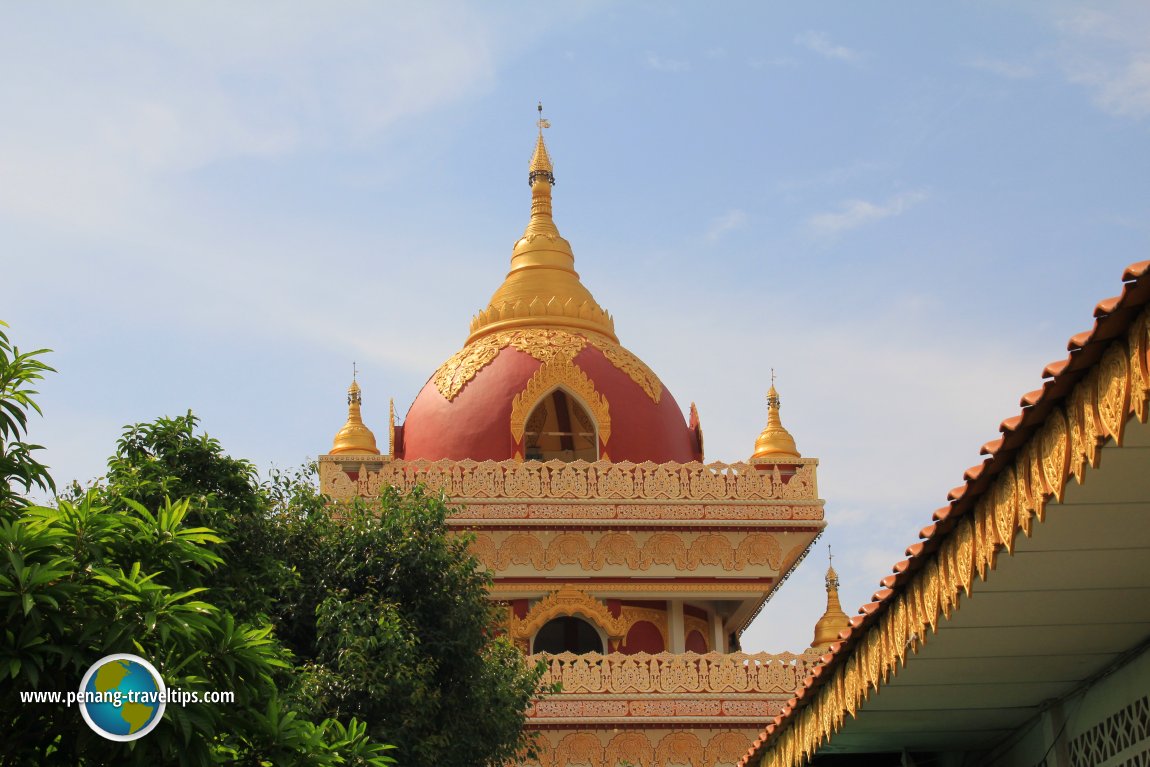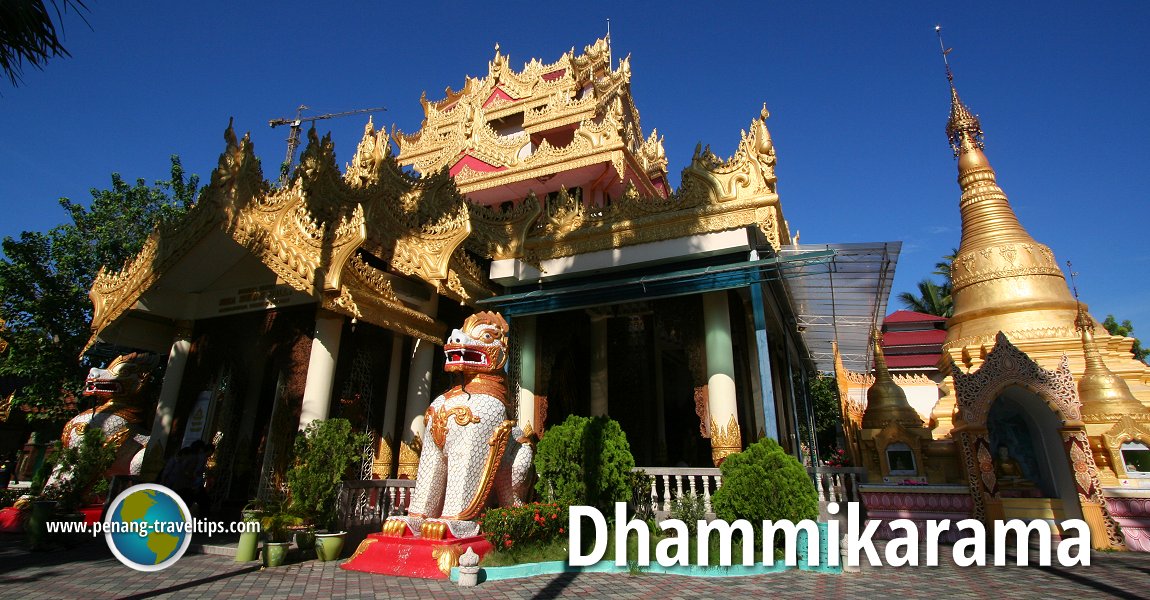 Dhammikarama Burmese Temple (7 June 2009)
Dhammikarama Burmese Temple (7 June 2009)
The Dhammikarama Burmese Buddhist Temple (GPS: 5.43139, 100.31439) in Burmah Lane, Pulau Tikus, George Town, is the only Burmese Buddhist temple to be built in Penang.
Originally known as the Nandy Molah Burmese Temple, the Dhammikarama Temple was built in 1803, on land donated by Nyonya Betong, one of its many woman patrons. She purchased the land from one George Layton for 390 Spanish dollars (the common currency at that time). The site was off the coast of Teluk Ayer Rajah, a bay that gave its name to the Ayer Rajah area stretching from the coast to present-day Western Road.
 Aerial view of Dhammikarama Burmese Temple (22 July 2019)
Aerial view of Dhammikarama Burmese Temple (22 July 2019)
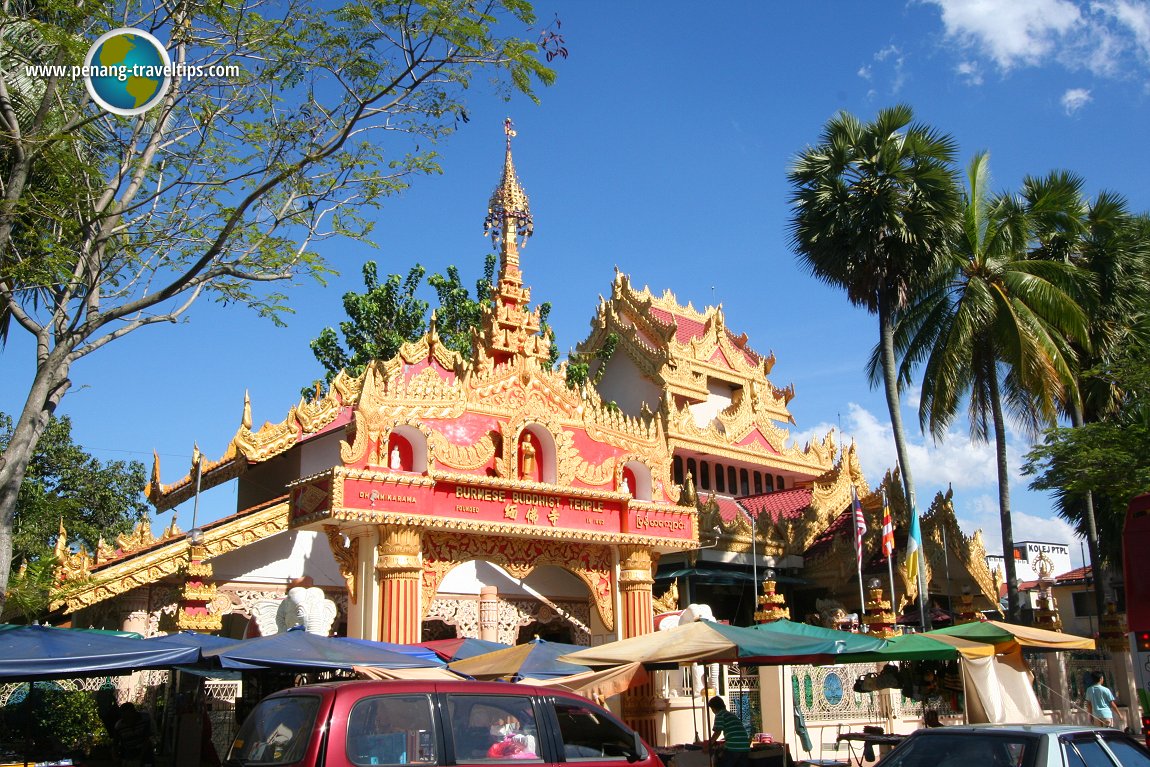 Entrance arch, Dhammikarama Burmese Temple (7 June 2009)
Entrance arch, Dhammikarama Burmese Temple (7 June 2009)
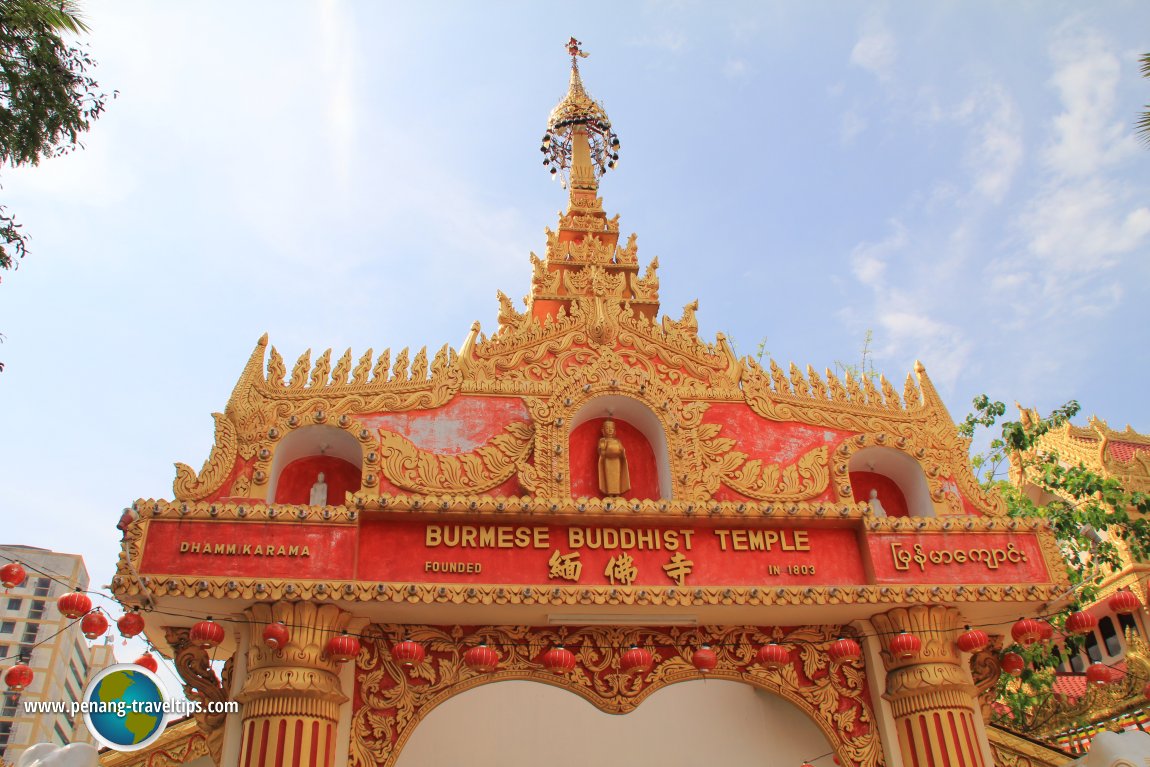 Dhammikarama Burmese Temple (10 May 2011)
Dhammikarama Burmese Temple (10 May 2011)
There was a Burmese settlement in Ayer Rajah known as Kampung Ava. Separately, when the Eurasians came over from 1810 onwards, and populated the area which they called Pulau Tikus, they also created their own village, called Kampung Serani, around the Church of the Immaculate Conception.
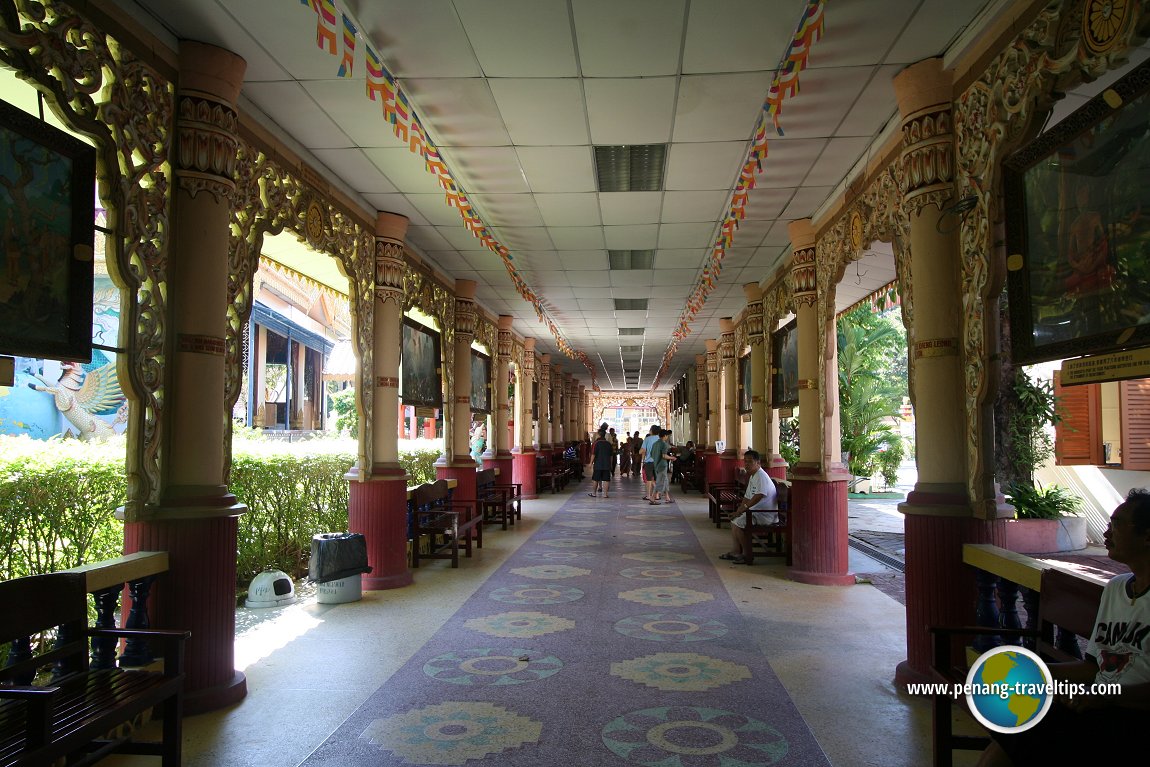 The Grand Corridor, main passageway to the main hall of Dhammikarama Burmese Temple (7 June 2009)
The Grand Corridor, main passageway to the main hall of Dhammikarama Burmese Temple (7 June 2009)
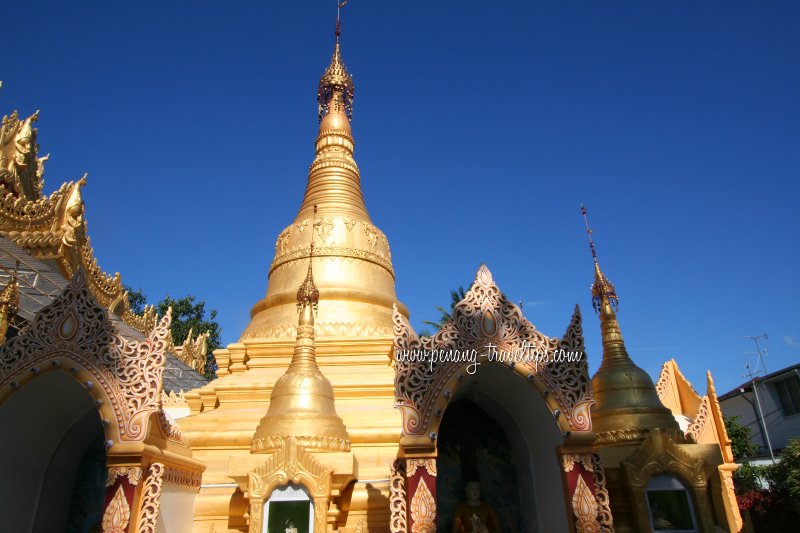 A chedi at Dhammikarama Burmese Temple (7 June 2009)
A chedi at Dhammikarama Burmese Temple (7 June 2009)
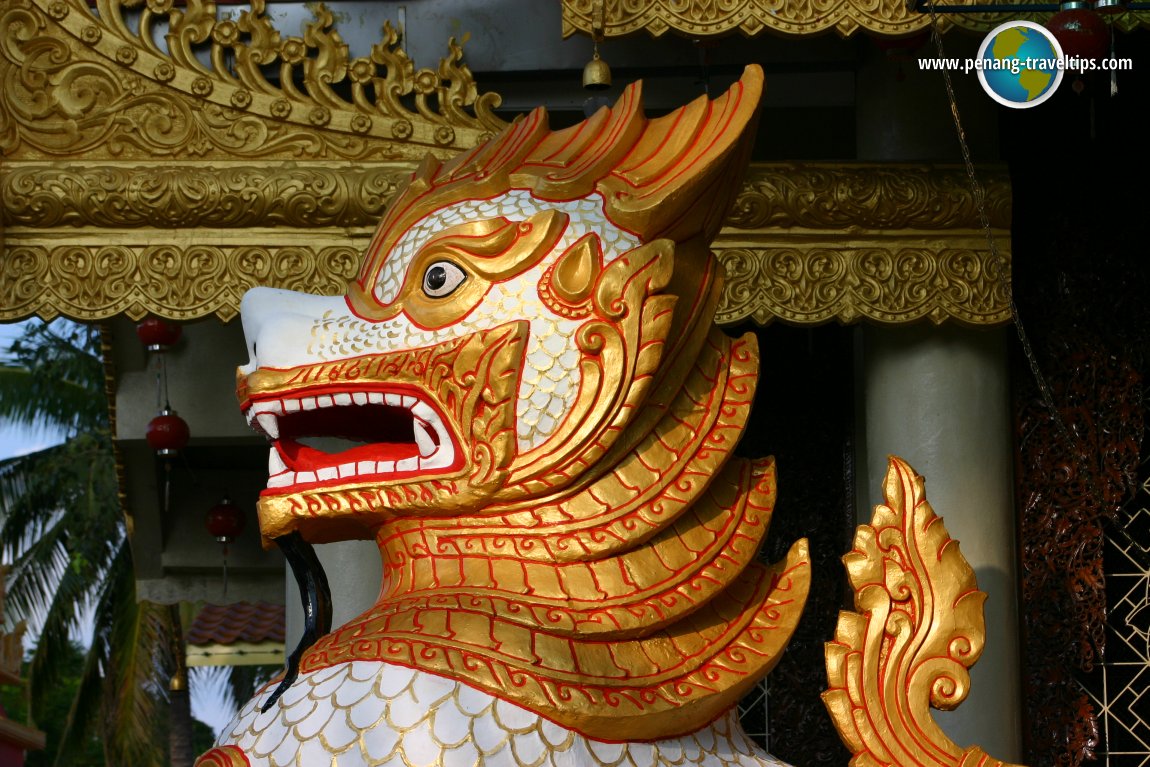 The chinthe, the mythical guardian lion-dog of Burmese temples (18 December 2003)
The chinthe, the mythical guardian lion-dog of Burmese temples (18 December 2003)
The oldest part of the temple is the stupa which was consecrated in 1805. It is enshrined within an outer stupa which was constructed in 1838, together with the ceremonial hall guarded by a pair of stone elephants.
Mythical figures and religious icons dot the spacious compound, much of which were later additions. Among them are bell-bearing acolytes, myriad buddhas, chimeras and flying beings. Two huge and imposing-looking chinthes (mythical beings that are a cross between a dragon, a dog and a lion) flank the entrance to the main prayer hall. At a disused 200 year-old well is a huge pond filled with carps. Buddha statues in different meditative poses nestle in grottos marked with the names of individual donors as well as signs of the zodiac. A pair of winged chimeras called Panca Rupa look resplendent in the roles as "Guardian Protectors of the World."
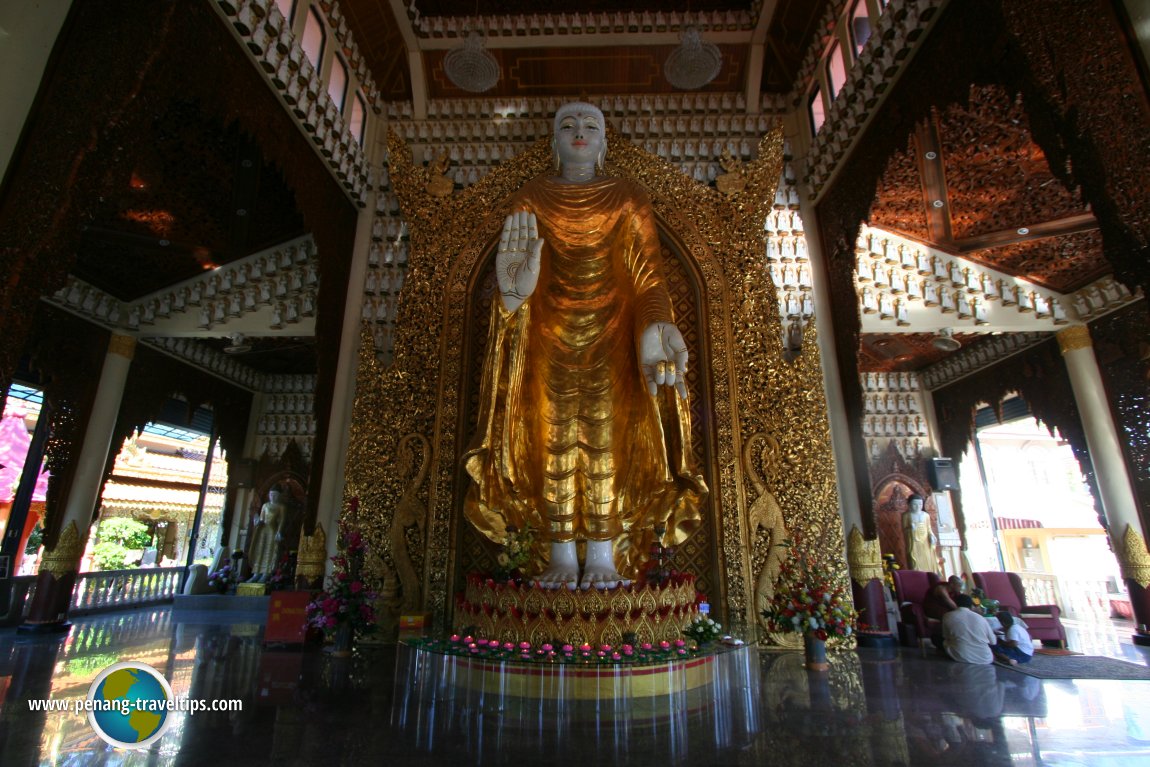 The main Buddha image at the Dhammikarama Burmese Buddhist Temple (7 June 2009)
The main Buddha image at the Dhammikarama Burmese Buddhist Temple (7 June 2009)
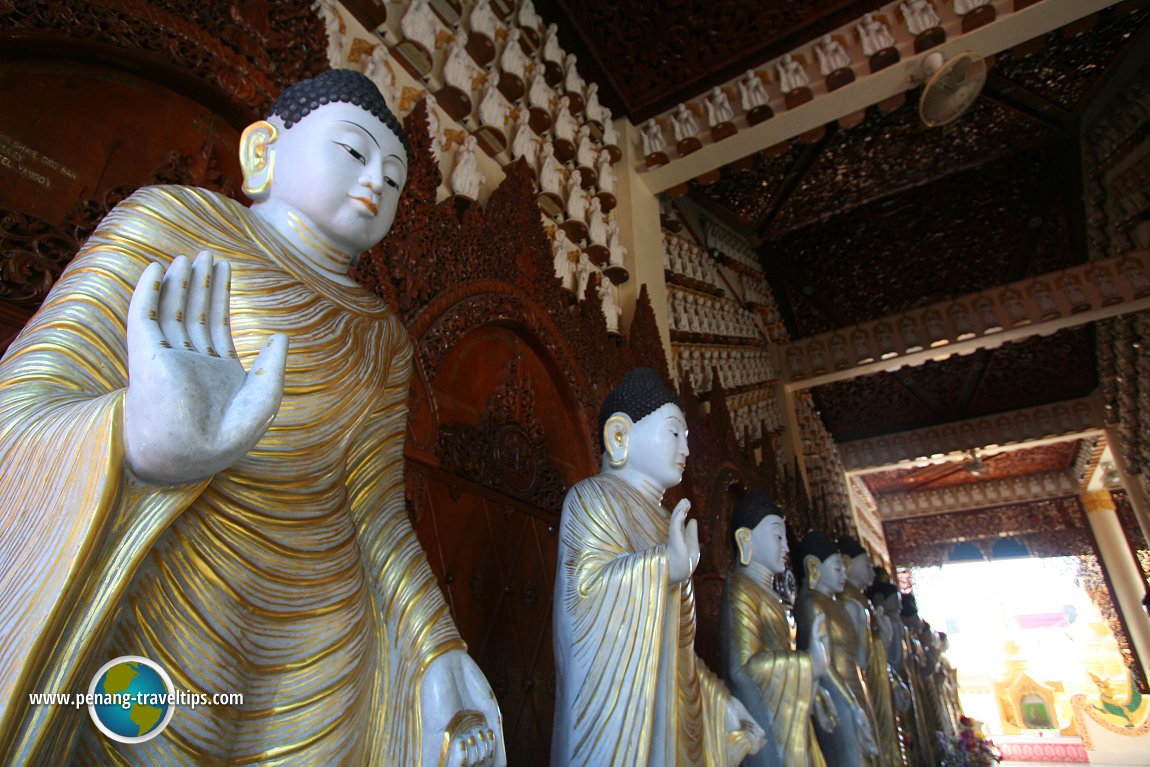 Styles of Buddha images from various countries (7 June 2009)
Styles of Buddha images from various countries (7 June 2009)
A huge mural depicts the Great Renunciation of Prince Siddharta. The future Buddha is shown riding his steed Kanthaka in mid-air with his faithful servant Channa seemingly hanging on. Evil beings try to discourage him from his noble quest while good ones welcome him with open arms.
At the main prayer hall, voices are reduced to a whisper and the silence is broken only by the occasional ringing of temple bells. The latest addition to the Dhammikarama Buddhist Buddhist Temple is the Golden Pagoda Bell Tower which was opened to the public on 15 May, 2011.
 Column signifying the Buddhist emblem of peace and prosperity (7 June 2009)
Column signifying the Buddhist emblem of peace and prosperity (7 June 2009)
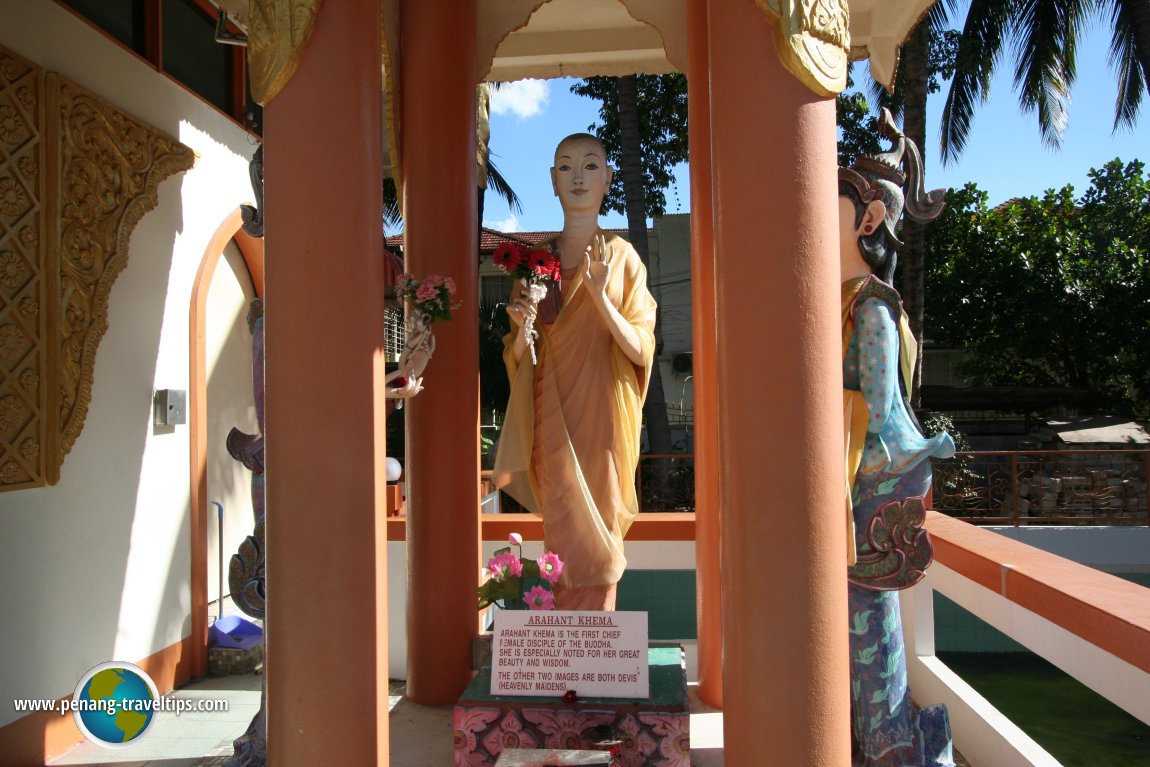 Statue of Arahant Khema, the first chief female disciple of Buddha (7 June 2009)
Statue of Arahant Khema, the first chief female disciple of Buddha (7 June 2009)
Going to Dhammikarama Burmese Buddhist Temple by public transport
Take any bus that passes through Burmah Road or Kelawei Road. From either of these, walk from bus stop to Burmah Lane to reach Wat Chaiyamangkalaram. Buses to take include Rapid Penang 101, 103 and 104. You should also plan to visit Wat Chaiyamangkalaram across the road.Golden Pagoda Bell Tower
DetailsArahant Upagutta
The Arahant Upagutta pavilion is a shrine dating back to 1840. Originally of modest construction, it has since been reconstructed a number of times, the latest being in 1976. The pavilion enshrines the image of Arahant Upagutta, a spirit being believed by the devotees to have powers for fulfilling wishes and exorsicing evil.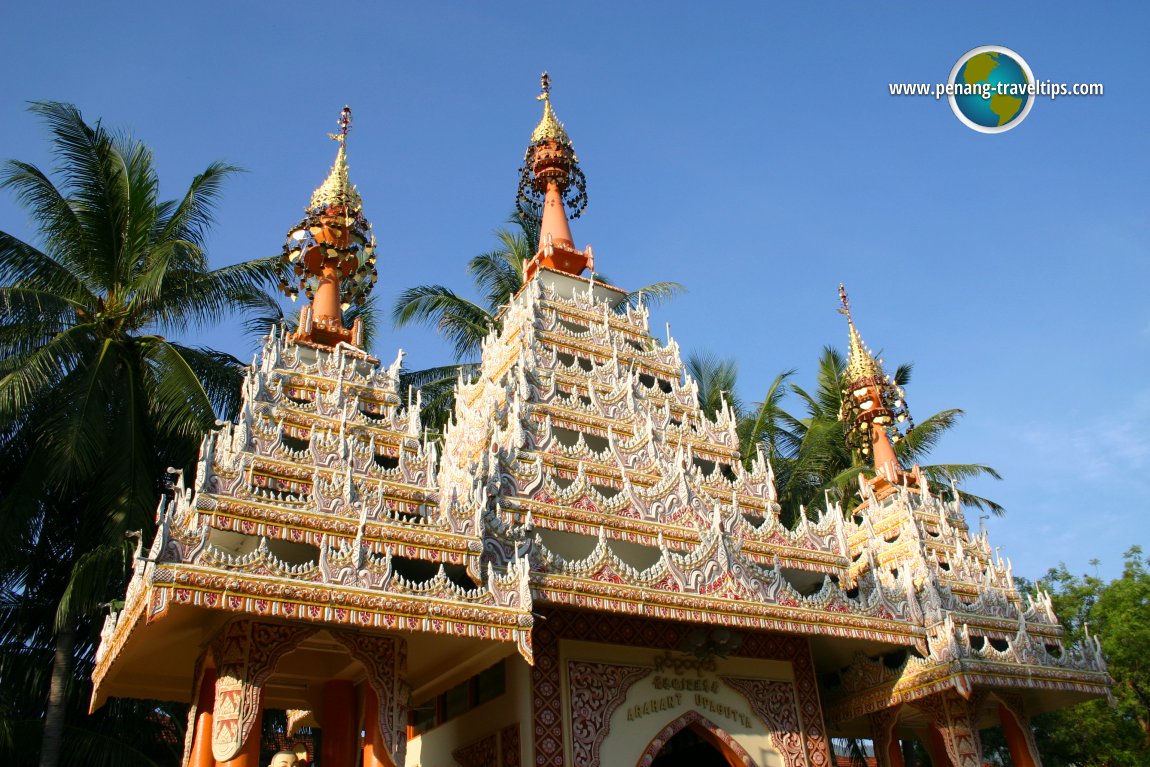 Spires of the Arahant Upagutta pavilion (15 February 2004)
Spires of the Arahant Upagutta pavilion (15 February 2004)
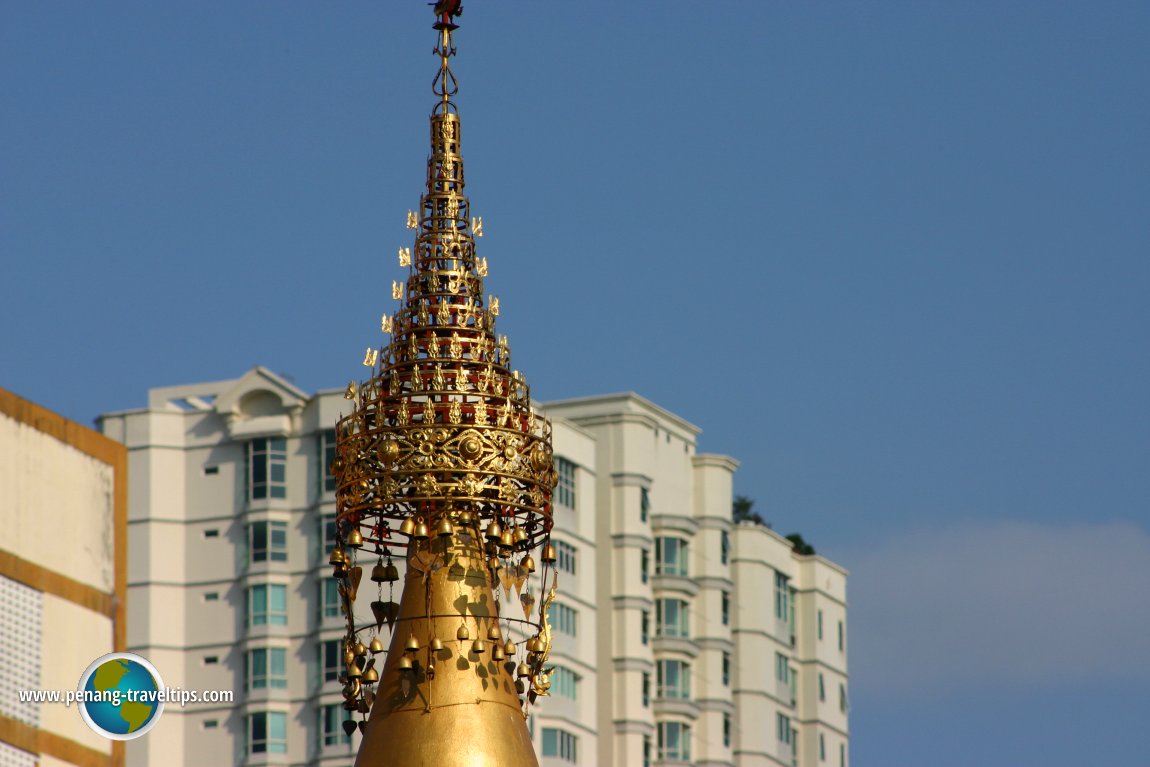 Hti, a finial ornament at the top of a Burmese spire at Dhammikarama Burmese Temple (18 December 2003)
Hti, a finial ornament at the top of a Burmese spire at Dhammikarama Burmese Temple (18 December 2003)
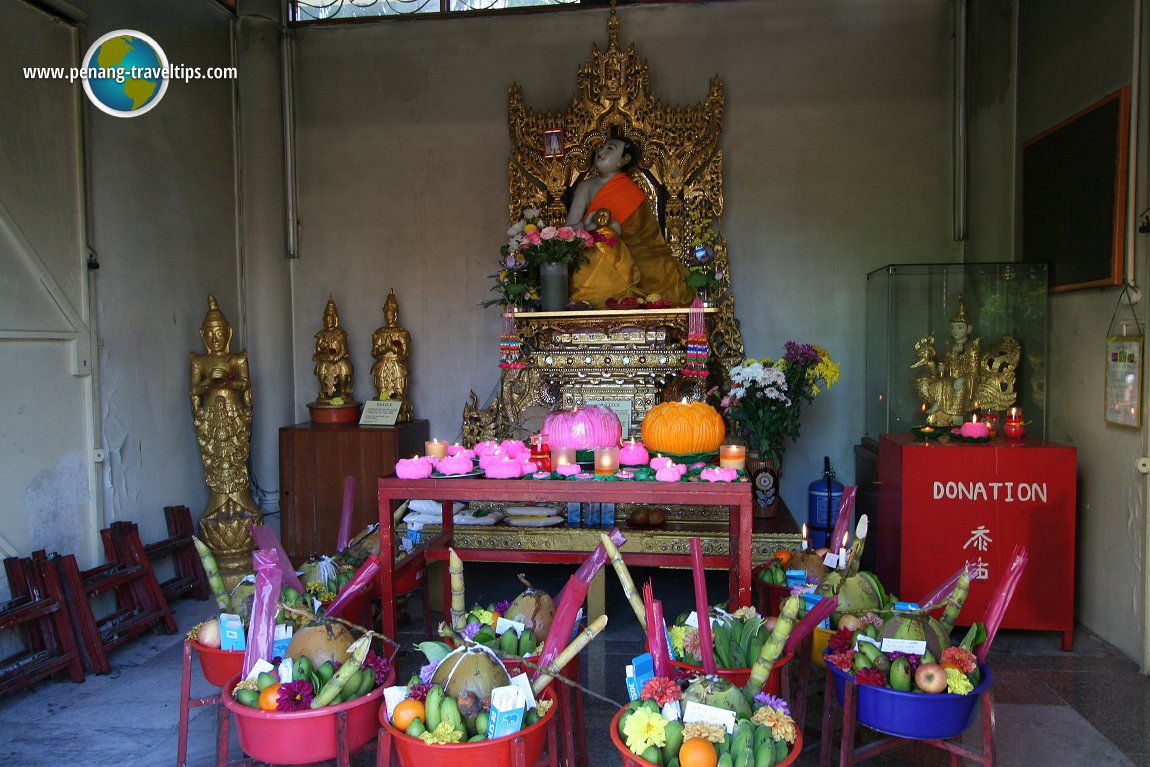 Offerings to Arahant Upagutta (7 June 2009)
Offerings to Arahant Upagutta (7 June 2009)
Temple Well
The well within the ground of Dhammikarama Burmese Temple dates back to the early 19th century, when the temple was the nucleus of a Burmese settlement in the area. The well used to serve the community before there was piped water.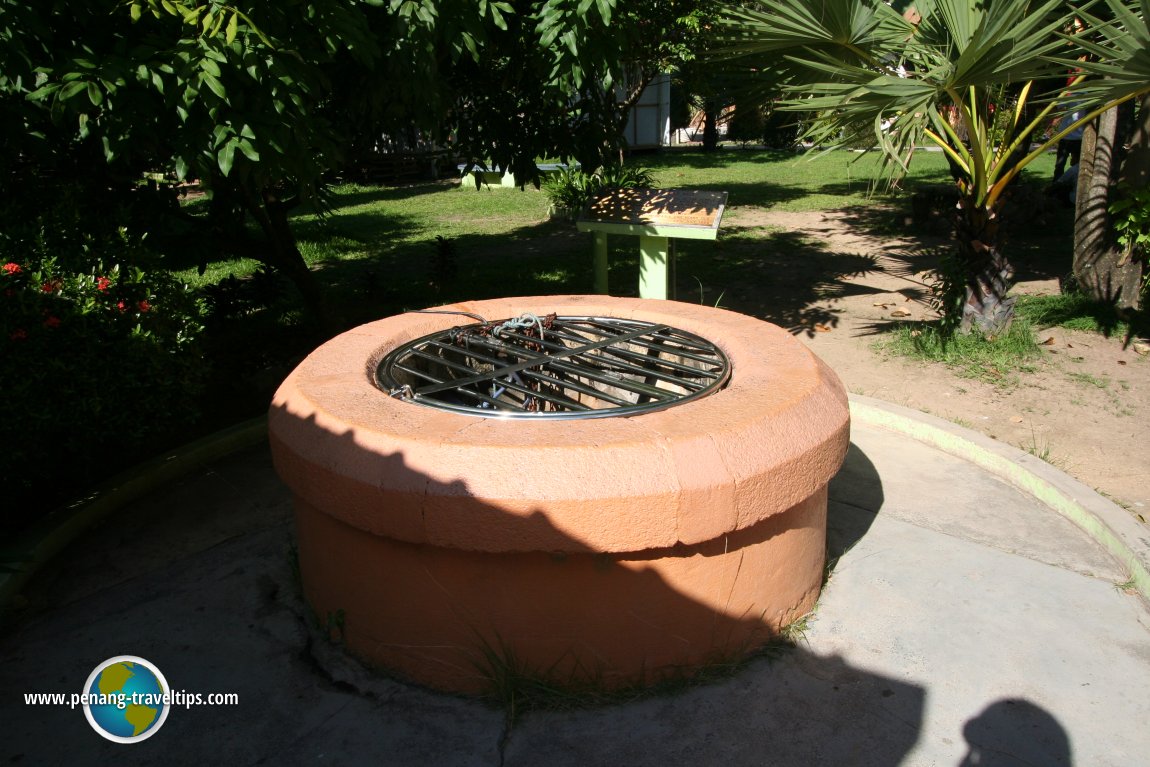 Dhammikarama temple well (7 June 2009)
Dhammikarama temple well (7 June 2009)
Memorial Chedi
This chedi was erected in memory of the venerable U Jagara. Born in Tavoy, Burma in 1882, he served as Chief Monk of the Dhammikarama Burmese Temple for 35 years, from 1922 until his demise in 1957.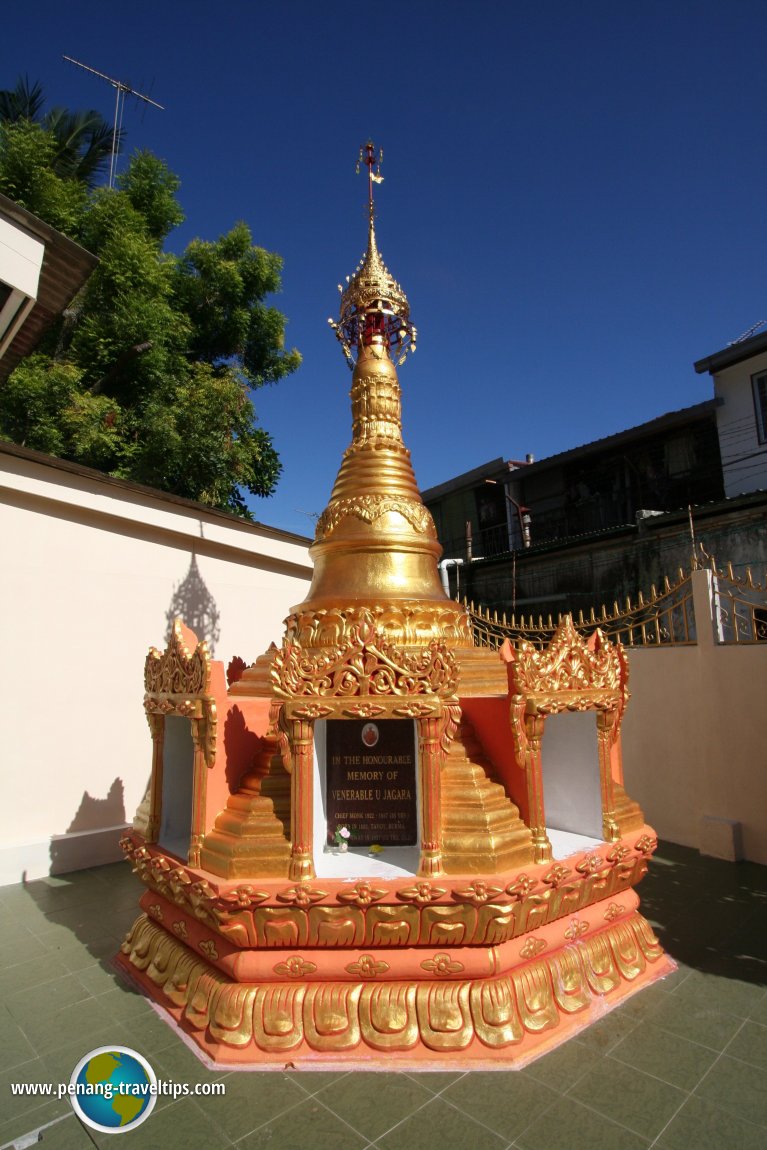 Dhammikarama memorial chedi (7 June 2009)
Dhammikarama memorial chedi (7 June 2009)
Great Renunciation of Siddhartha Gautama
This is a mural depicting how Prince Siddhartha Gautama renounced his worldly possession for the life of as ascetic. Heavenly beings, or devas, provided him encouragement while demons, or mara, attempted to dissuade him.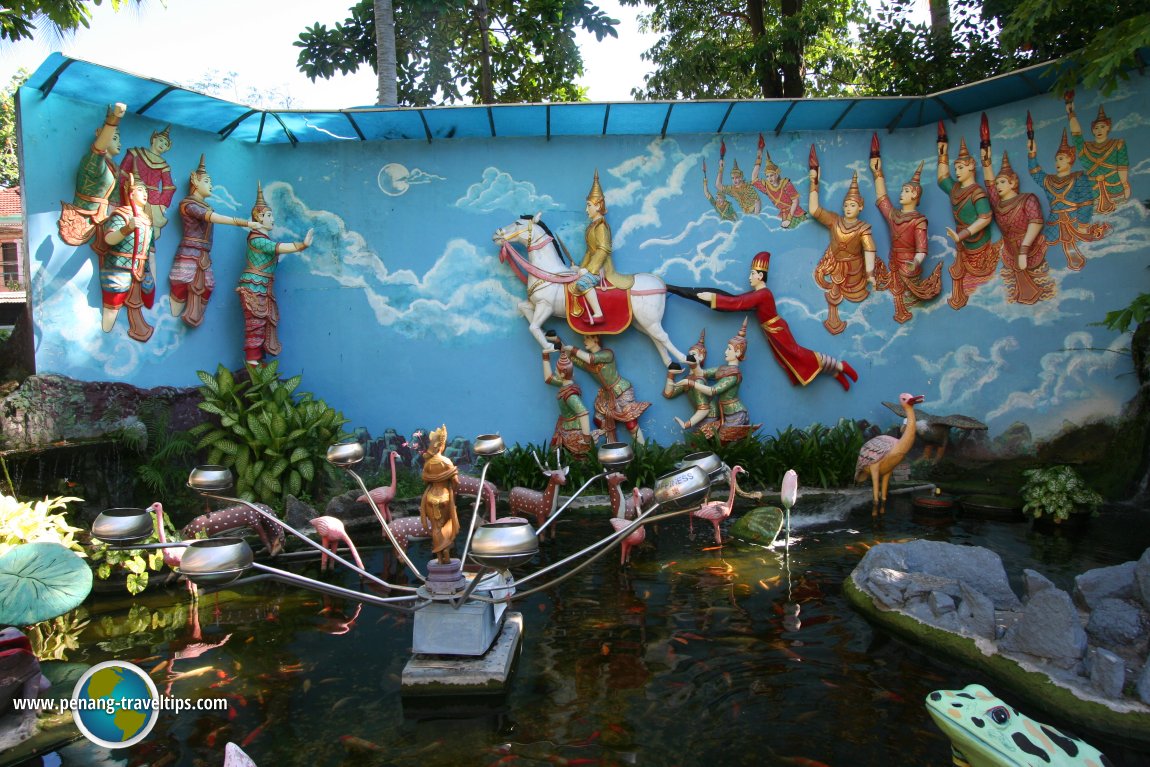 Mural of the Great Renunciation of Siddhartha Gautama (7 June 2009)
Mural of the Great Renunciation of Siddhartha Gautama (7 June 2009)
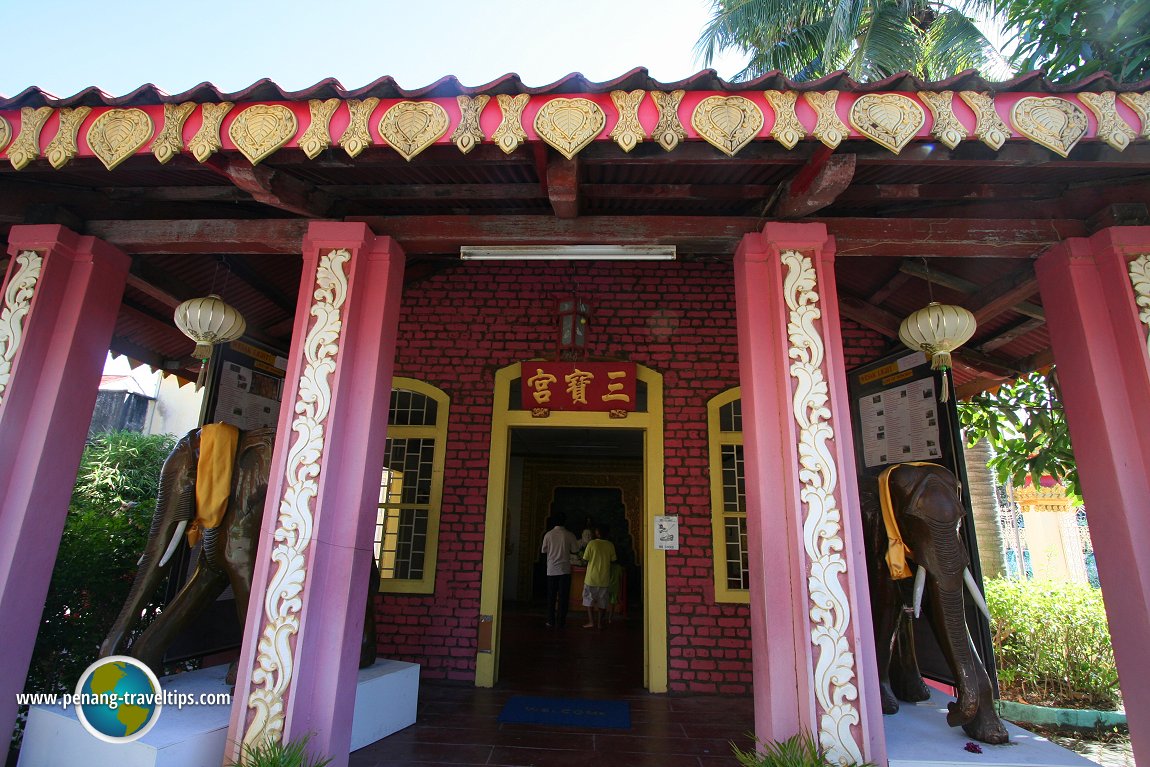 Sam Poh Tong, or Three Jewel Hall, at Dhammikarama Burmese Temple (7 June 2009)
Sam Poh Tong, or Three Jewel Hall, at Dhammikarama Burmese Temple (7 June 2009)
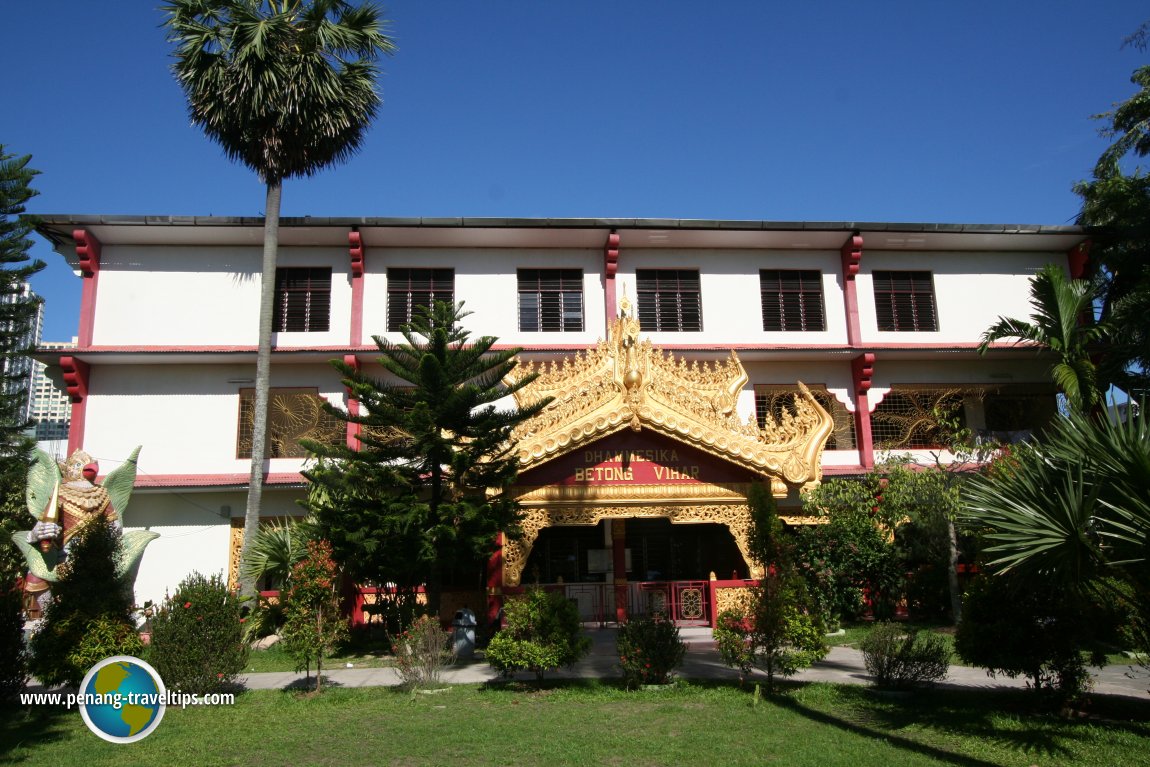 The Dhammesika Betong Vihar, a hall at the rear of the temple (7 June 2009)
The Dhammesika Betong Vihar, a hall at the rear of the temple (7 June 2009)
Dhammikarama Burmese Temple is  on the Map of Jalan Kelawai, Penang
on the Map of Jalan Kelawai, Penang
List of Penang Tourist Attractions; Buddhist Temples in Penang and Buddhist Temples in Malaysia

Copyright © 2003-2025 Timothy Tye. All Rights Reserved.

 Go Back
Go Back